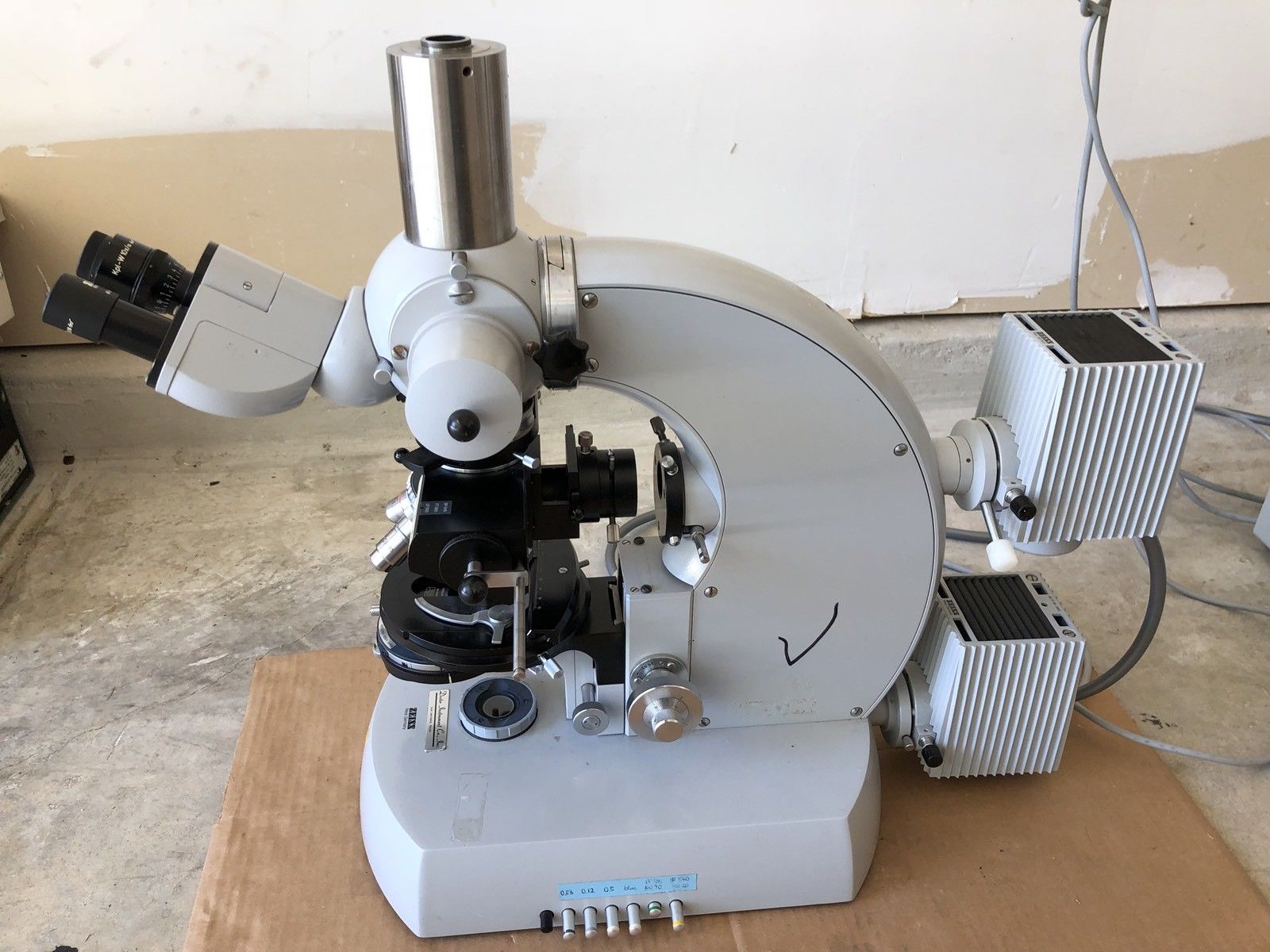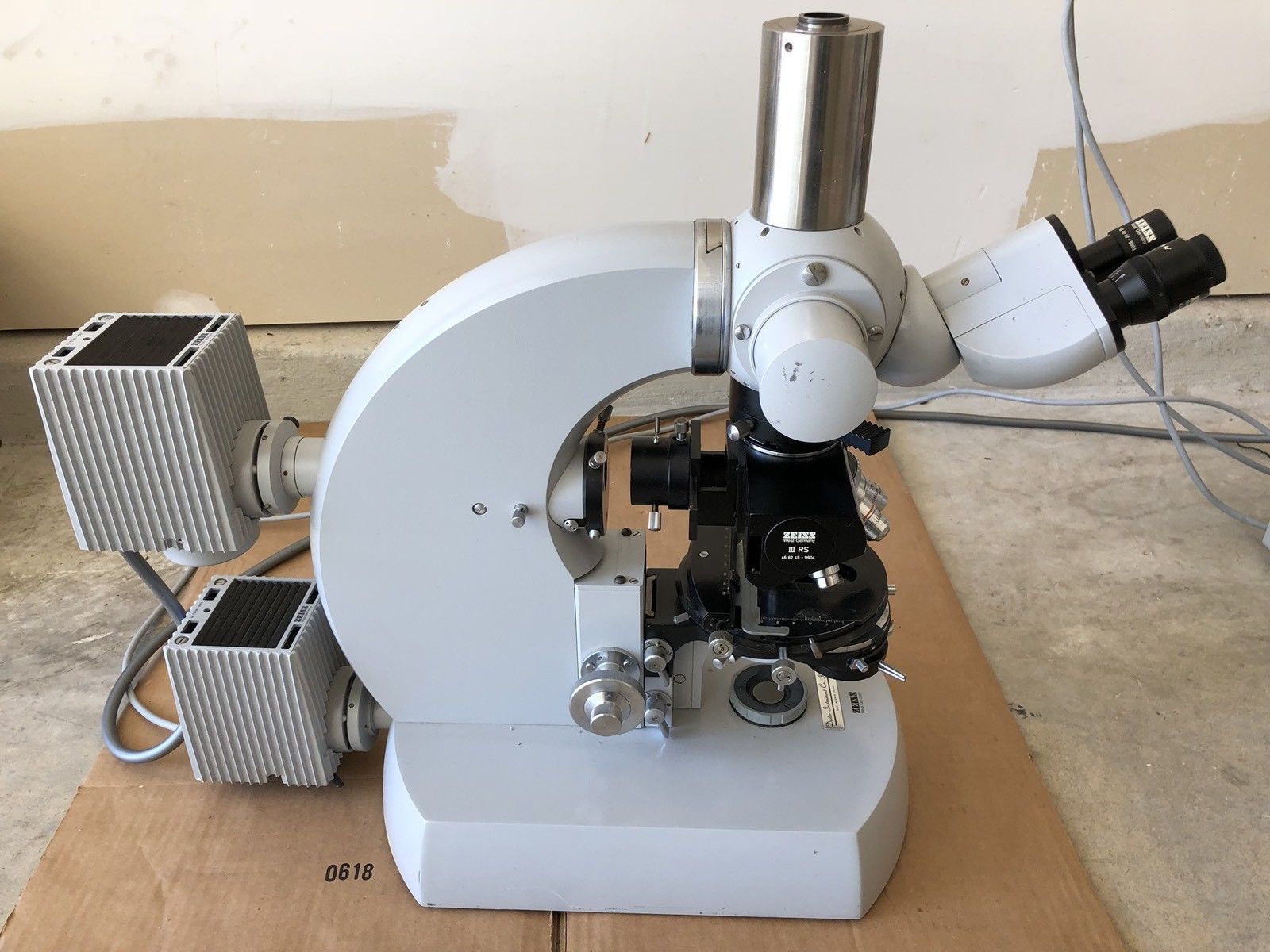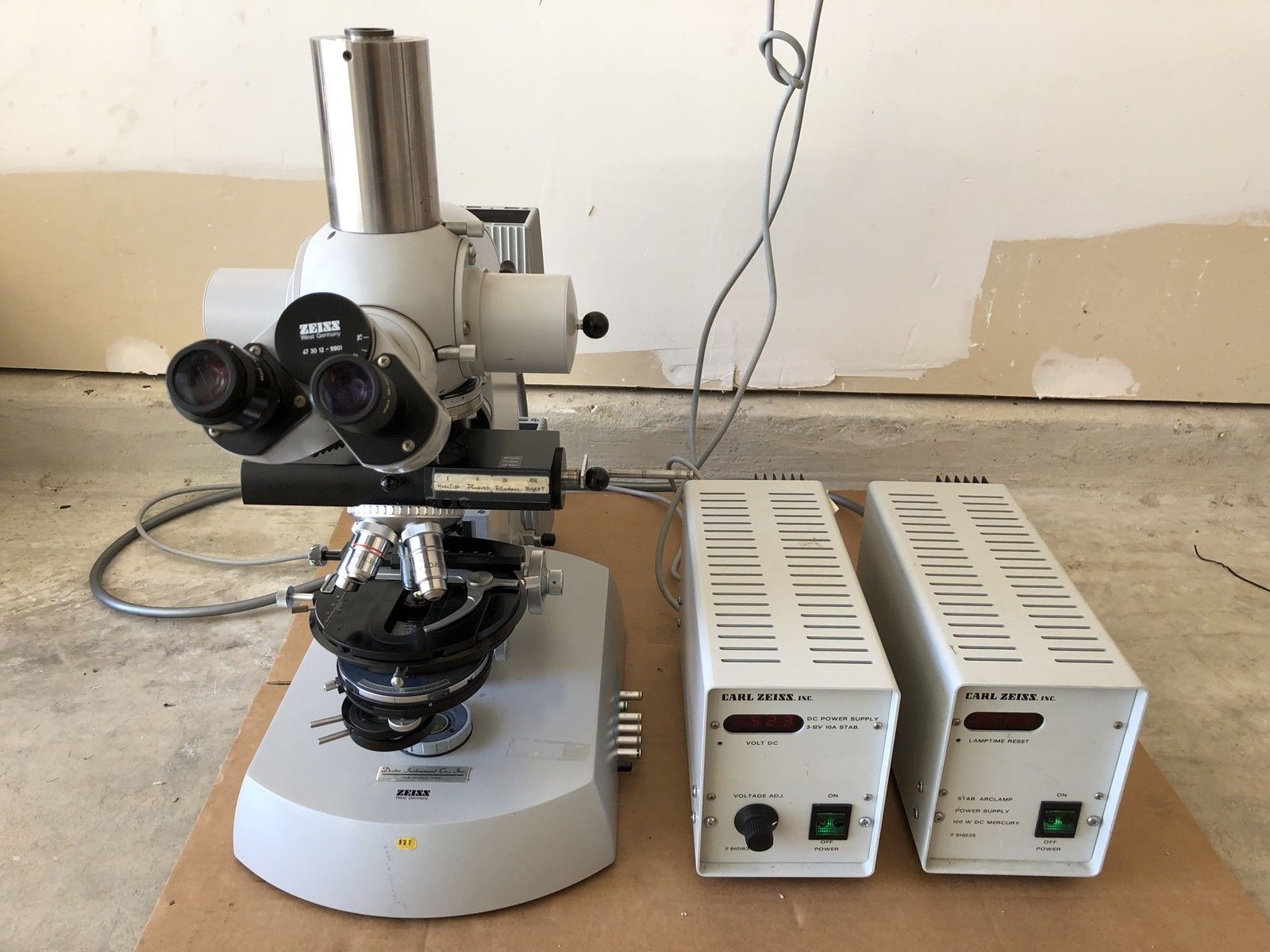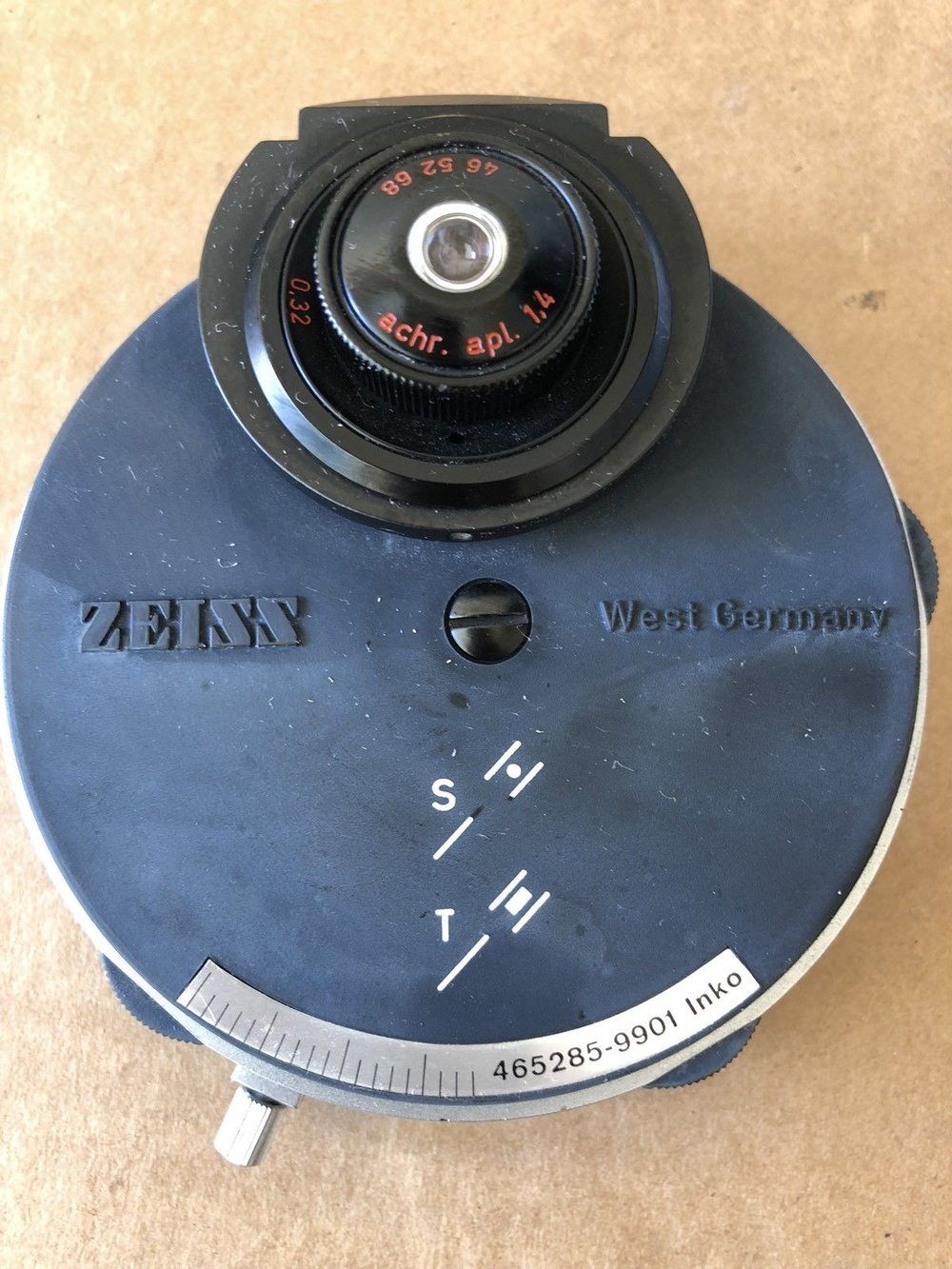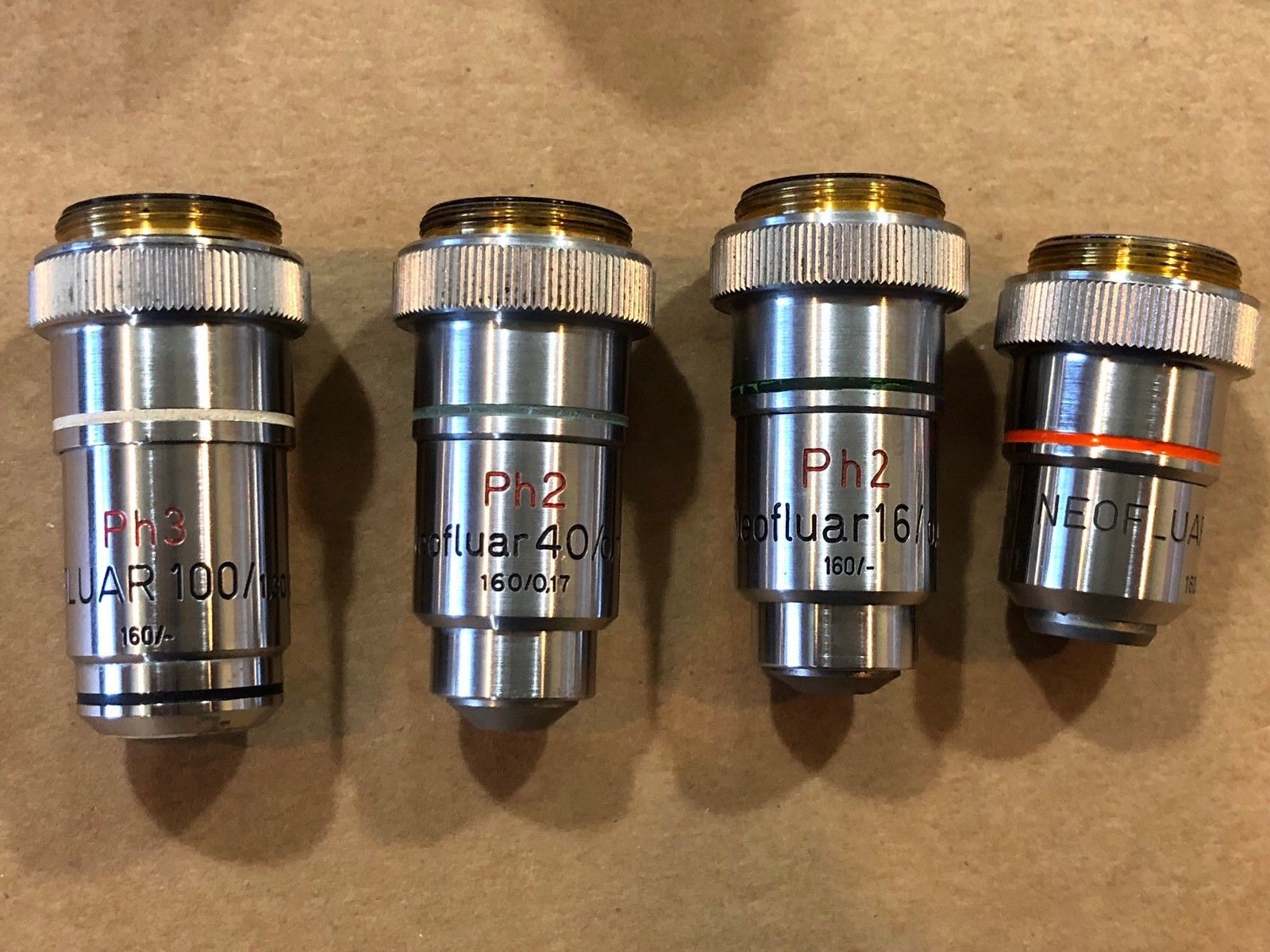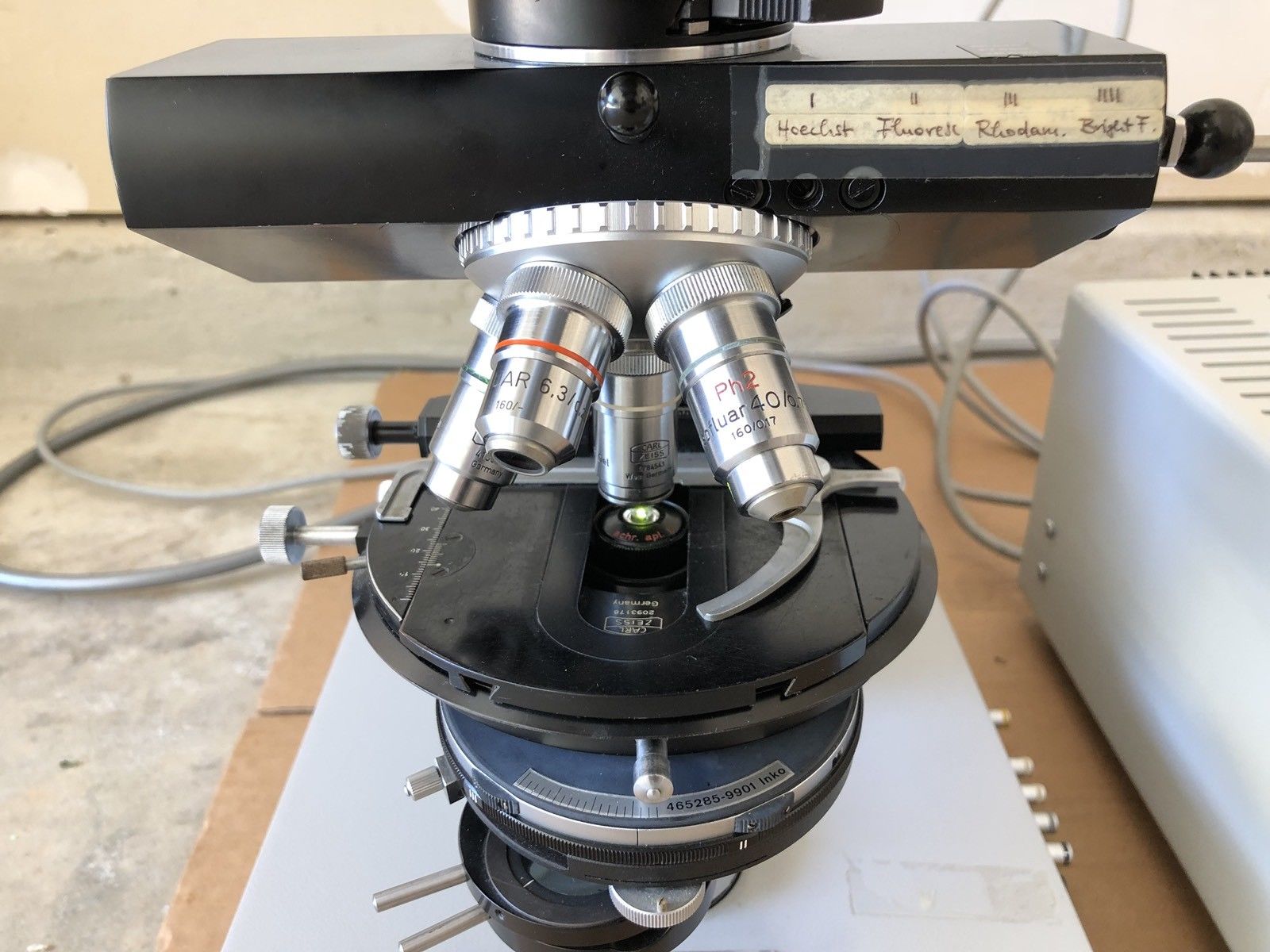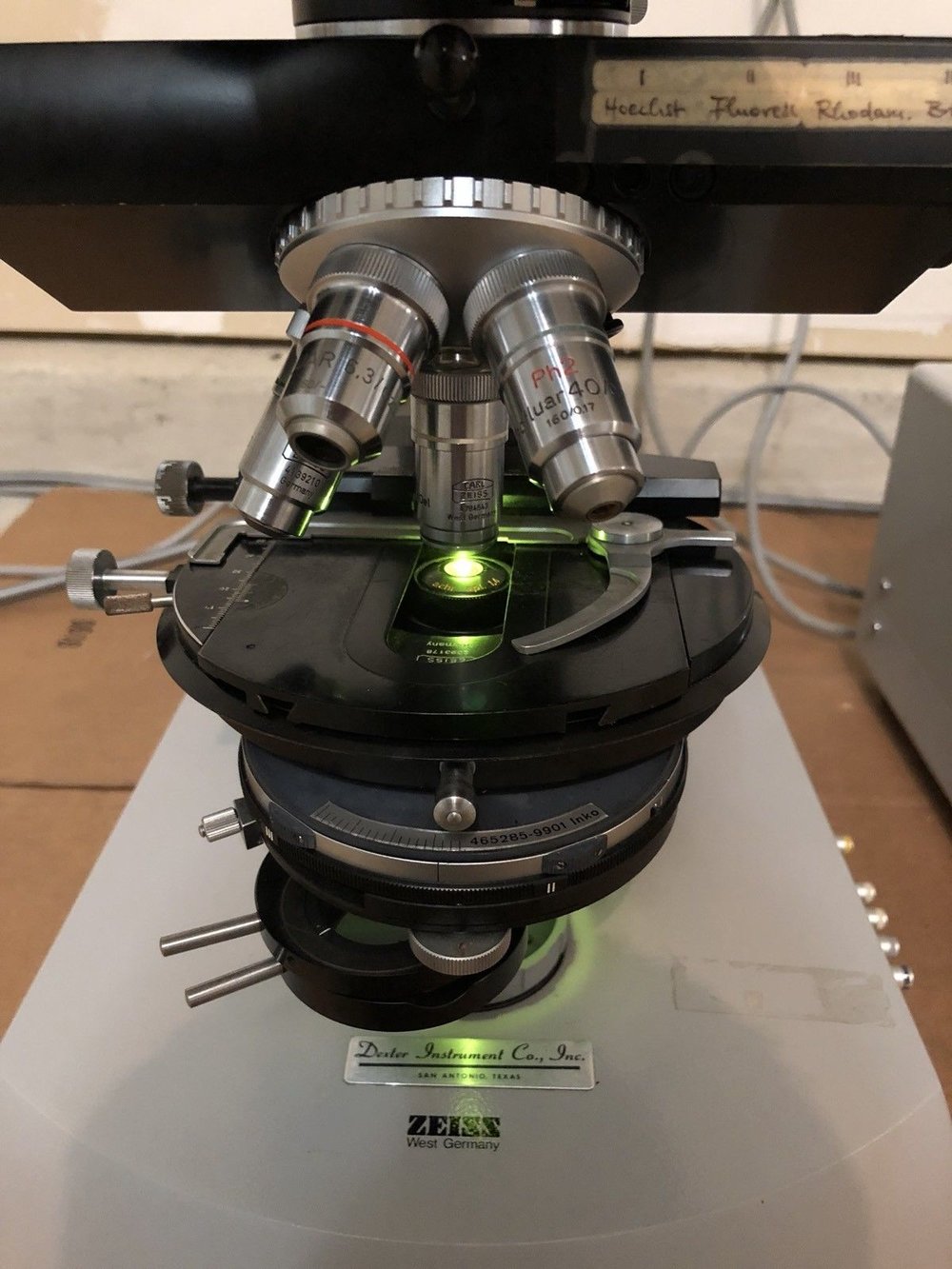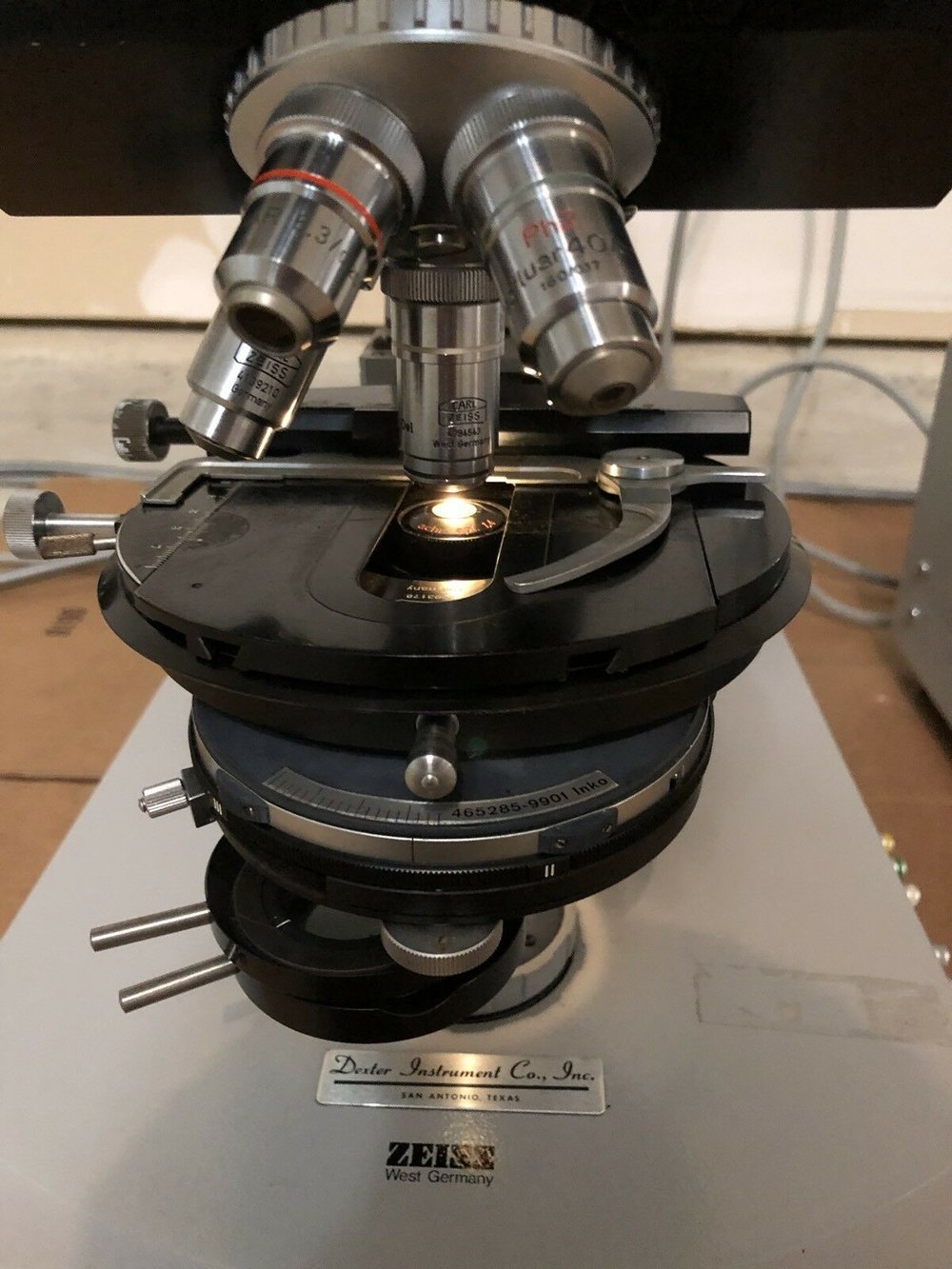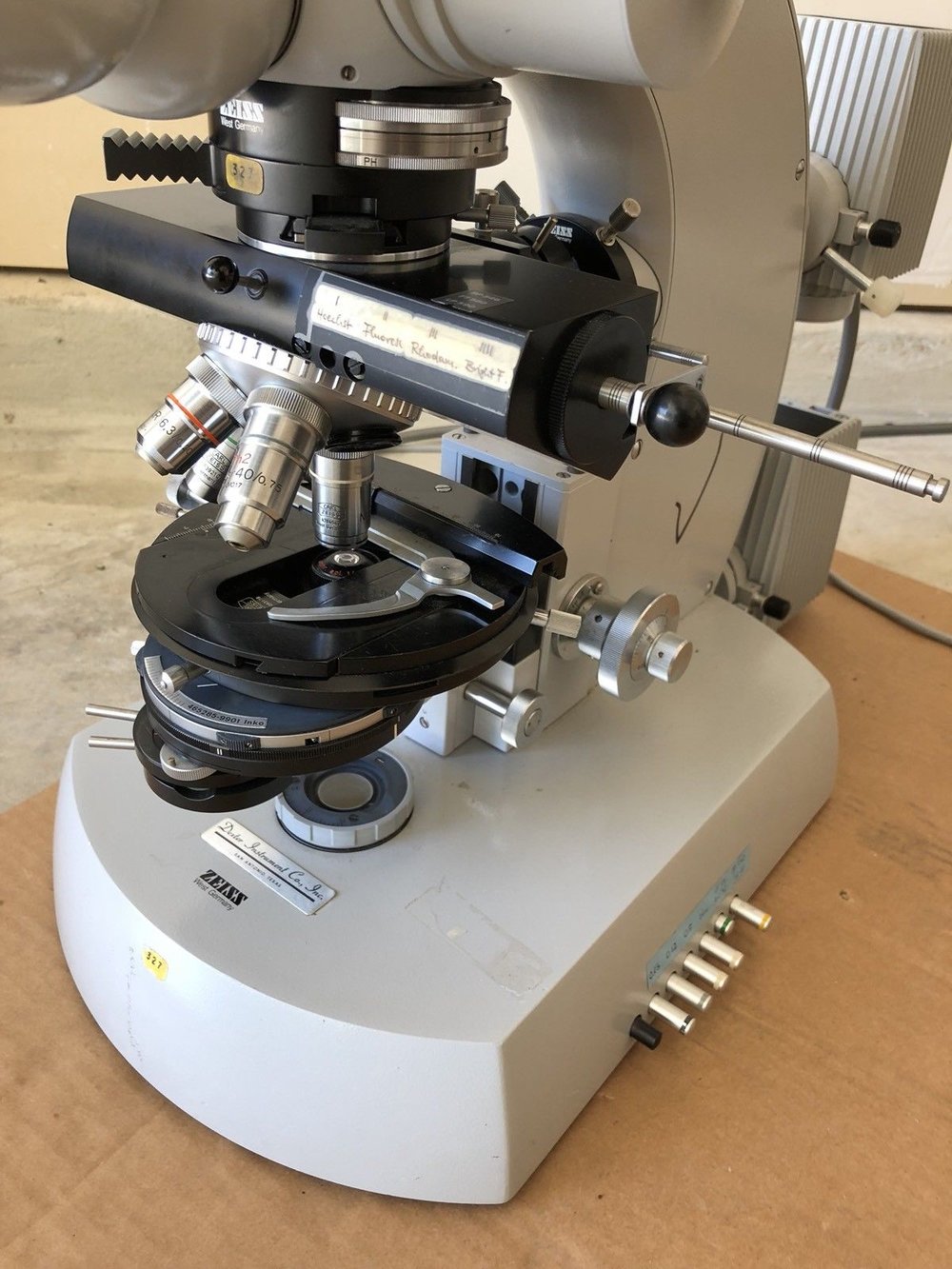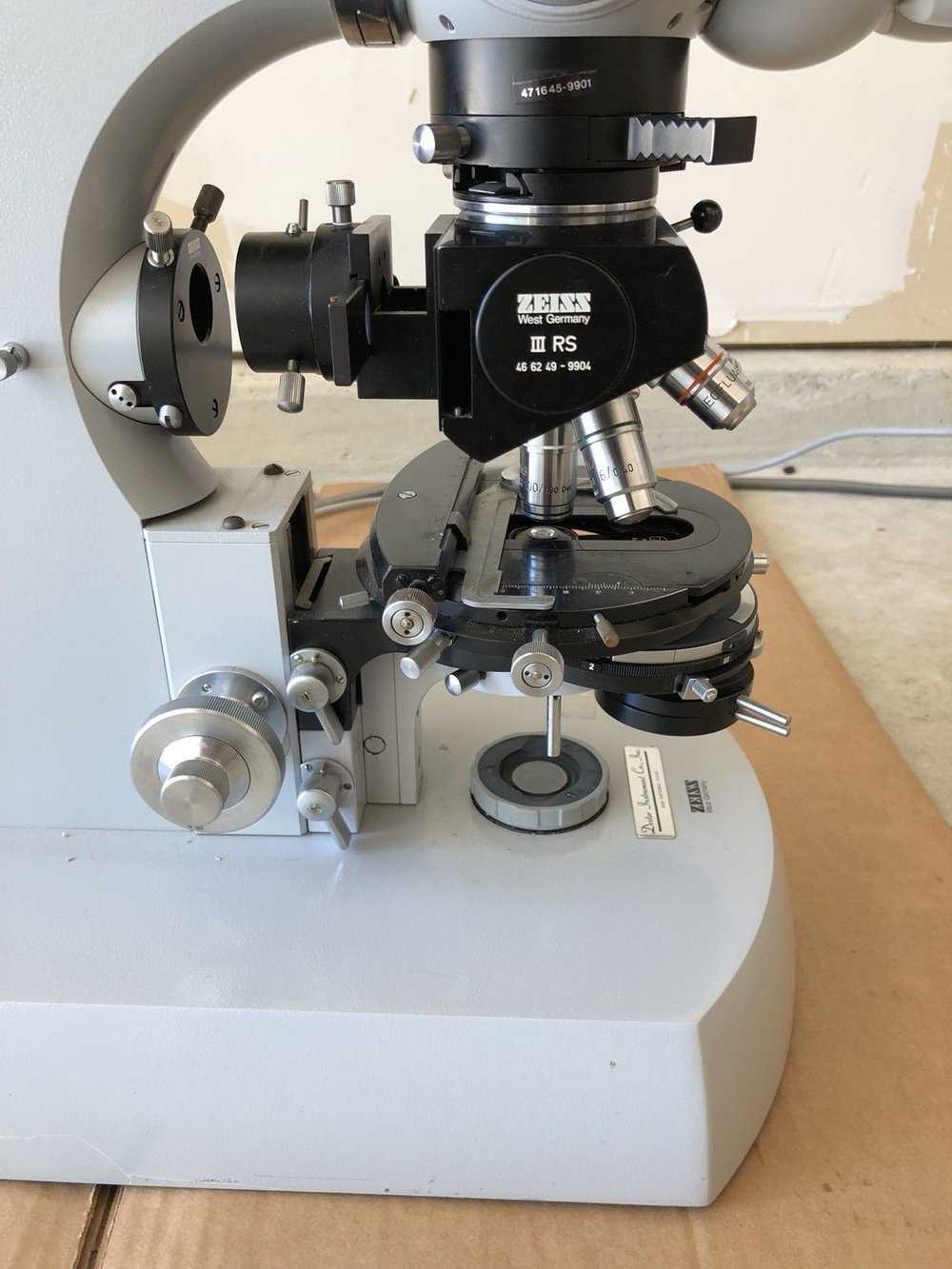Hobbyst46 wrote:1. {Snip} As such, it must have costed a fortune decades ago.
Yes, I'm sure it did, in today's dollars I could never afford an equivalent scope.
Hobbyst46 wrote:
Notes: (a) this is a very heavy microscope, even without the power supplies and gadgets.
I actually prefer it have some weight as the ultimate goal is photomicroscopy. I'm guessing it's around 60 lb's does that sound correct?
Hobbyst46 wrote:(b) it seems to have been out of use for a long time, some thumb screws are corroded
Not sure how long it has been out of commision but I know from the seller it was recently purchased at a surplus auction.
Hobbyst46 wrote:(c) and it sadly lies waiting down in a non-inviting surplus storage area.
Yes it does look neglected on the floor, hopefully that will be remedied this weekend

Hobbyst46 wrote: 2. The objectives cover the magnification range nicely, 6.3X-16X-40X-100X, they are Neofluar and phase contrast, which is very good and relatively expensive. The 100X is oil immersion.
I too, thought it was a nice magnification range. It is encouraging to read that they rate "very good" in your opinion.
Hobbyst46 wrote:Note: (a) For DIC, I think that other objectives, not phase-contrast would be better, but I'm not sure.
I'm not sure myself, but I suspect you are correct, given my limited understanding of how DIC works. While the ultimate goal is DIC I am very happy to start out with phase contrast.
Hobbyst46 wrote:(b) I would thoroughly inspect those objectives, for potential fungus and/or delamination.
Agreed - I had the seller inspect the objectives and notes objectives are clear and appear to be free of delamination.
Hobbyst46 wrote:3. The head is Siedentopf (very convenient) and the eyepieces are 10X KPL WF, very good.
Note: must check the eyepieces for delamination.
I'm not familiar with Siedentopf, what makes it convenient? I didn't even think to ask about eyepiece delamination. I'll be sure to inspect them.
Hobbyst46 wrote:4. I would also verify that the field aperture ring rotates freely, since, if it is stuck, repair might be a nuisance.
Didn't think about this either, while not a deal breaker certainly could provide some leverage.
Hobbyst46 wrote:5. The lamphouses - the bottom one (halogen) and especially the top one (the mercury or xenon lamp) might require some cleaning of the bulbs and mirrors and lenses - according to the appropriate instruction manuals, with care.
Noted, I have experience with halogen bulbs and illuminators... Xenon/Mercury not so, while the scope has fluorescence capabilities it's not something I want to delve into right off the bat. That said as I learn the capabilities of the scope and it's various illumination techniques, I can envision (after proper research and understanding) exploring this realm.
Hobbyst46 wrote:6. I am guessing that the bulky phototube on the triangular head was a special modification for a light-sensitive camera or perhaps some other light-sensitive sensor, to acquire fluorescence data.
Not sure if it has special modifications. I'll let you know once I get my hands on it. Best I can tell it's a C-Mount, read microscope video camera. Typically those are CCD sensors which are more sensitive to low light, which I suspect would be beneficial to fluorescence photomicroscopy / video.
Thank you for all the input it has been most helpful.
Best regards - William
-----------------------------------
https://www.macrospheres.com